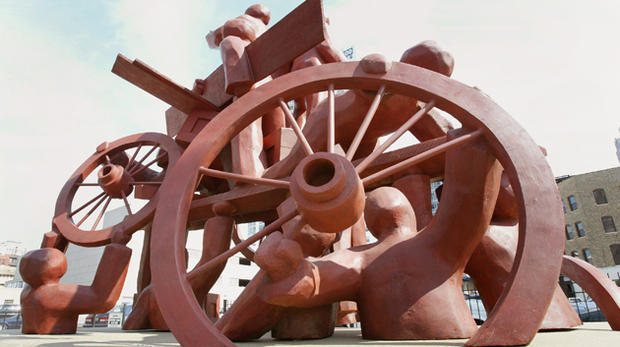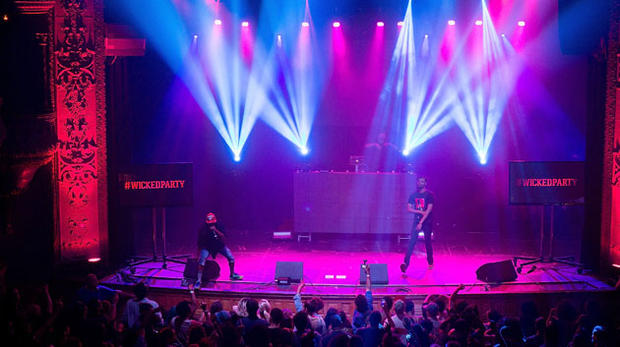Great Places To Visit On Chicago's West Side
Extending west of the Chicago Loop, Chicago's West Side has undergone several changes in its ethnic and socioeconomic makeup. Historically known as a gateway for immigrants and migrants, the West Side's diverse population includes multiple ethnic groups including Puerto Rican, Mexican, Polish, Italian, Czech and Greek residents. In the Near West Side, visitors can check out the Chicago Bulls and Blackhawks at the United Center, along with the University of Illinois at Chicago.
Here are some of the best places to visit on Chicago's West Side:
The National Museum of Mexican Art
WHERE: 1852 W 19th St., Chicago, IL 60608
You don't need to go south of the border to admire authentic Mexican art. The National Museum of Mexican Art,
located in Chicago's Pilsen neighborhood — the heart of the city's Mexican community — displays 3,000 years of artistry from both sides of the border. The 10,000-piece museum is one of the largest Mexican art collections in the U.S., featuring displays ranging from ancient Mexico to the present.
The museum also showcases an array of programs celebrating Mexican culture, like theater, dance, music, as well as performance companies. Exhibits from the museum have traveled to other museums around the world because of their high quality, but in Chicago, admission into the museum is always free of charge.
Carroll Avenue (A Subterranean Street)
WHERE: Carroll Avenue, Chicago, IL 60654
Near the mouth of the Chicago River's north branch, the Kinzie Street Bridge still stands as a symbol of the city's industrial past. The site also signifies the western end of Carroll Avenue, which is all that remains of the 19th and 20th-century rail lines that once ran from the Kinzie Street Bridge to Navy Pier. After passenger trains ceased to operate there in 1911, the lines later became an important freight route that carried items like Baby Ruths, Butterfingers, along with issues of The Chicago Tribune and The Chicago Sun-Times.
While Carroll Avenue today is largely overlooked and, to some degree, forgotten, it's still being used. The basement loading docks that were once connected to the rail lines are now mostly parking lots — and the street tends to be used for garbage pickup, deliveries and underground access for contractors to the buildings above, including the House of Blues. But if you visit, be aware that Carroll Avenue is only reachable by foot.
The Haymarket Memorial
WHERE: 1551-1591 W Washington Blvd, Chicago, IL 60607
One of the greatest tragedies to ever occur in Chicago happened on the evening of May 4, 1886, in the city's
Haymarket produce district. Chicagoans gathered in the streets to watch anarchist activists speak, from atop a freight wagon, about the violent death of workers during a labor dispute that occurred during the previous day elsewhere in the city. When about 175 police officers arrived to disperse the spectators, a dynamite bomb was thrown at them, resulting in the deaths of at least seven policemen and four civilians.
The sculpture at the site of the Haymarket bombing, among other themes, commemorates the fight for an eight-hour workday and, most importantly, the right of every person to pursue an equitable and prosperous life.
The sculpture, created by Mary Brogger, stands in the exact location of where the freight wagon stood, and where the Haymarket Riot occurred.
S**t Fountain
WHERE: 1001 N Wolcott Ave., Chicago, IL 60622
While many neighborhoods typically post signs reminding dog owners to clean up after their pets, one Chicago artist managed to get the message across in a more creative way. The giant bronze sculpture of feces, widely known as "S**t Fountain," is both a tribute to dog poop and a reminder to clean it up. Local artist Jerzy Kenar created the sculpture to recognize the neighborhood dogs that would regularly trample and defecate on his flowers. Although one might claim that the fountain is gross or in poor taste, the community has not reacted negatively to it whatsoever. In fact, many seem to appreciate the creative reminder to keep the neighborhood clean. And it's technically located on Kenar's private property, so the City of Chicago isn't bothered by it either.
Thalia Hall
WHERE: 1807 S Allport St., Chicago, IL 60608
Along with the National Museum of Mexican Art, Chicago's Pilsen neighborhood offers another taste of history with
Thalia Hall. Located at the corner of 18th and Allport, Thalia Hall was founded in 1892 as a multi-purpose property boasting commercial storefronts, residential housing and a public gathering hall for the local community.
Modeled after the Prague opera house, the hall was one of the most decorated theaters of its time, operated for more than 70 years, and was eventually granted landmark status in 1985. Although it was closed to the public in the 1960s, the hall's original character and old-school charm was restored in 2013, and later reopened to the public.
Today, Thalia Hall features a cocktail bar, a beer-inspired restaurant and, of course, a large hall space fit for community events.






